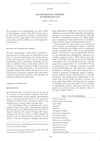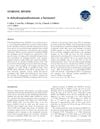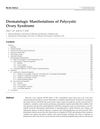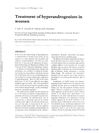Three-Month Treatment With a Long-Acting Gonadotropin-Releasing Hormone Agonist of Patients With Benign Prostatic Hyperplasia: Effects on Tissue Androgen Concentration, 5α-Reductase Activity and Androgen Receptor Content
February 1989
in “
The Journal of clinical endocrinology and metabolism/Journal of clinical endocrinology & metabolism
”
gonadotropin-releasing hormone agonist benign prostatic hyperplasia testosterone dihydrotestosterone 5α-androstan-3α,17β-diol 5α-reductase androgen receptor cytosolic androgen receptor nuclear androgen receptor plasma testosterone GnRH agonist BPH T DHT 3α-diol 5α-reductase AR cytosolic AR nuclear AR plasma T
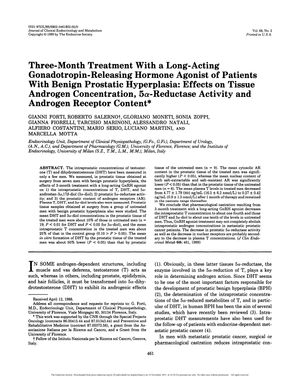
TLDR A three-month treatment with a GnRH agonist significantly lowered androgen levels and 5α-reductase activity in men with benign prostatic hyperplasia.
In a study involving seven men with benign prostatic hyperplasia (BPH), a three-month treatment with a long-acting gonadotropin-releasing hormone (GnRH) agonist was found to significantly reduce intraprostatic concentrations of testosterone (T), dihydrotestosterone (DHT), and 5α-androstan-3α,17β-diol (3α-diol) to approximately 25% and 10% of the levels in untreated men, respectively. Additionally, the treatment resulted in a roughly 50% reduction in prostatic 5α-reductase activity, which is responsible for converting T to DHT. The cytosolic androgen receptor (AR) content in prostatic tissue increased, while nuclear AR content decreased significantly. Plasma T levels in treated men also dropped to castrate levels after one month and remained low. The study concluded that while GnRH agonist treatment significantly decreases intraprostatic androgen concentrations, it does not completely eliminate them, which may have implications for the treatment of metastatic prostatic cancer. The changes in 5α-reductase activity and nuclear receptors are likely due to the reduced plasma T concentrations.

